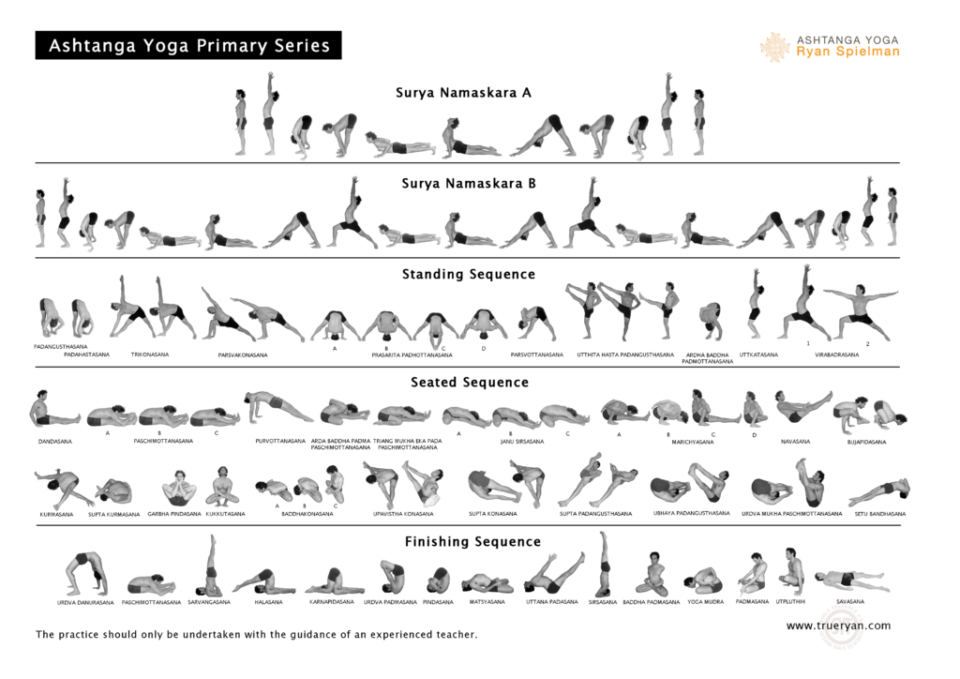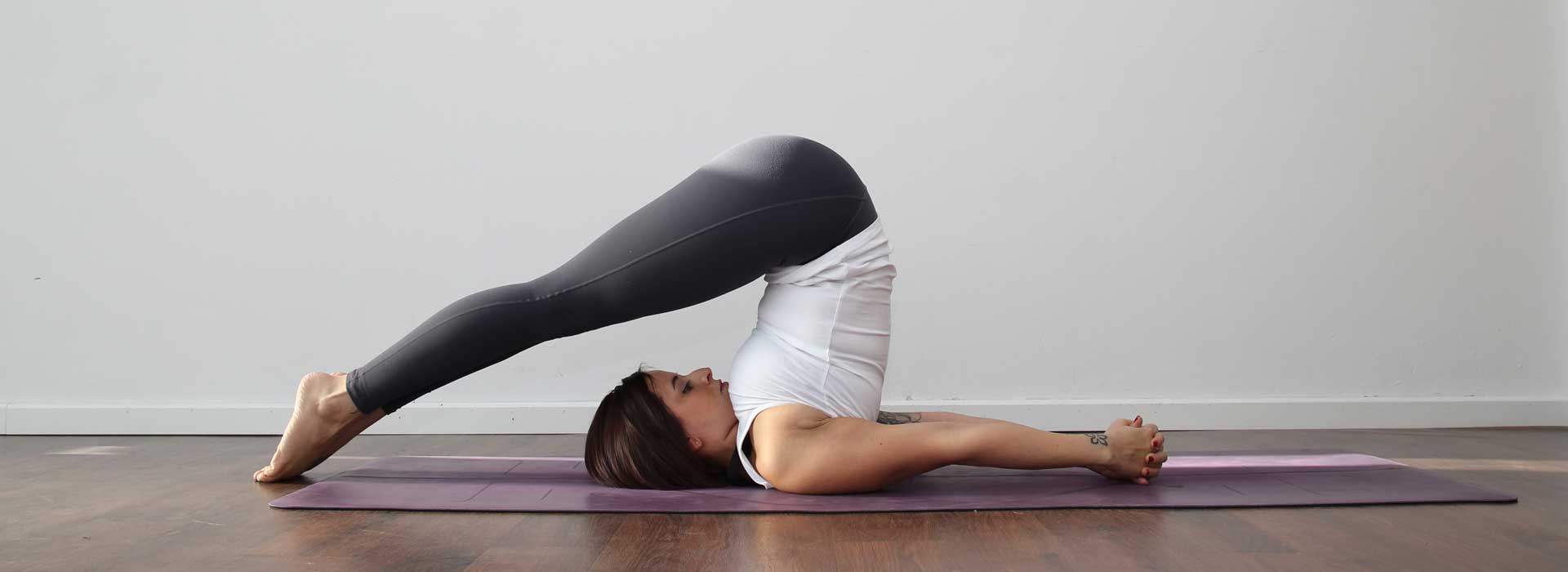Are you someone who experiences anxiety?
Would you like to find a way to relieve those symptom’s in a sustainable and natural way?
In this article I’m going to give you 5 reasons why Ashtanga yoga is good for relieving symptom’s of Anxiety and why you should give it a go!
What is Anxiety?
Lets start by identifying what Anxiety actually is and how it can affect us…
When we think of anxiety in the mind, it’s basically a fear or panic about future events. We tend to worry excessively and ruminate on possible scenarios and outcomes of those specific events.
Anxiety can be brought about by many stressful situations in life, and everyones experience of anxiety or what triggers it can differ from person to person.
At some time in our lives we have all experienced some sort of anxiety.
Anxiety in the mind can look and feel like this:
- nervous or panicky
- overwhelmed or full of dread
- feel out of control
- find it hard to concentrate
- be irritable
- have a very busy mind with racing thoughts
The nervous system and our fight or flight response also has a huge part to play in our anxiety.
Our nervous systems are our primal survival instinct that have been designed as a mechanism to help us respond to a threat or danger to our lives. Without it, we wouldn’t have survived this long.
So anxiety is also very much in the body, not just the mind.
In the body anxiety can look and feel like:
- increased hormones, cortisol, testosterone, adrenaline
- feeling hot
- sweating more than usual
- stomach cramps and/or needing to pee or poo more than usual
- feeling faint
- dry mouth
- rapid heart beat
- increased breathing rate
- trouble sleeping
- low appetite
A lot of these physiological responses to anxiety in the body are there to conserve energy to prepare the body to fight or flight when we are in survival mode. For example, digestion will slow down or stop (hence the need to pee or poo more, the body wants to get rid of the excess waste so it wont waste energy). Our breathing and heart rate increases to pump oxygen around the body so that we can run away from the danger… and those stress hormones help speed along the whole process and give us the energy and alertness we need to respond.
These bodily responses are perfectly normal and vital to our survival. But if the body is left in this state and we experience anxiety for long periods of time, health problems can arise due to the body not functioning in a balanced and optimal way long term.

Not only is anxiety totally exhausting mentally, but it also takes it toll physically. It’s really important that the body finds its way back to homeostasis, (balance) as soon as possible, once the ‘threat’ has gone away.
Once this happens the body can continue to function in rest and digest mode. Then the body and mind become calm, and all processes with digestion, hormonal secretion, respiratory etc return back to ‘normal’.
There are types anxiety that are more general and tend to be based on our circumstances. Once the stressor has been removed or overcome, the anxiety goes away.
Imagine feeling nervous or apprehensive before a job interview or prior to taking an exam. Generally once the job interview or exam is over the anxiety goes away.
Other types of Anxiety can be largely based on our past experiences, we may have suffered some sort of trauma that has led us to feel anxious around certain people, situations, or perhaps we may even carry this sense of fear around with us indefinitely.
If we do not have the tools to regulate our emotions and nervous system back to homeostasis, then our symptom’s stick around longer than desired, and this is when bigger issue can occur.
Over time this can affect how we go about our lives, how we interact with people and our environment, how we feel about ourselves and what our overall health is like.
Im pleased to say that in recent years we are hearing more and more in the mainstream how holistic and natural practices such as yoga are beneficial for maintaining good mental health.
Soon enough ill let you know why Ashtanga is great for anxiety relief but first incase you didn’t know…
What is Ashtanga ?
Ashtanga vinyasa is a from of yoga popularised in Mysore, India by Sri Patabbhi Jois. While the Ashtanga method is a complete system of yoga that is detailed in the Yoga Sutras Of Patanjali, in the west Ashtanga is most commonly known as a physical practice. So in this article I will be specifically focusing on how the physical aspect of the practice can help with anxiety.
There are 6 series of Ashtanga yoga sequences, each one building upon the next, but the primary series is the most well known and well practiced.
There are three main areas of attention within Ashtanga vinyasa yoga.
These are:
- Pranayama (breathing)
- Asana (posture)
- Dristhi (gaze)
These three elements when practiced in conjunction with each other allow the body, mind and nervous system to become purified over time.
Each series is a set sequence of postures that are practiced in the same order each time. Each sequence begins with Surya Namaskar, (sun salutations) followed by a standing sequence, seated sequence and finishing sequence.
Each asana (posture) in the Ashtanga sequence is held for 5 breaths, and a specific dristhi (gaze) for each posture is held to help steady the mind.
Each asana is then linked together with a vinyasa which is a movement that flows from one asana to the next which is synced with the breath.
The physical practice not only strengthens, tones and keeps the body flexible but it also works on a deeper level, to calm the mind and nervous system.
So why is Ashtanga good for anxiety?… Read on to find out!

5 Reasons Why Ashtanga is good for relieving Anxiety…
1. Set sequence of familiar poses.
As the sequence is the same each time, there are no surprises. If your anxiety causes you to focus on fearing the outcome of events or the future, then knowing what is coming next in the sequence can be super helpful in creating a sense of safety in our body and mind.
2. No time to think.
The natural continuous flow of the Ashtanga Vinyasa sequence requires you to have steady concentration on how you position and move your body, synching the breath with each movement, and incorporating your dristhi (gaze).
As you keep your concentration fully with your practice there isn’t really much time to think about anything else, so those racing thoughts and busy mind has a chance to dissolve away leaving you feeling calm and centred in your being.
3. Counter poses and the Vagus nerve

The sequence incorporates a lot of counter poses, moving from upward dog to downward dog, back bends and forward folds. These type of movements are great for stimulating the vagus nerve, which is great for helping with anxiety. The vagus nerve is directly linked to our nervous system, including hormonal secretion, respiratory functioning and digestion.
Polyvagal theory tells us that stimulating the vagus nerve and improving vagal tone helps the body and nervous system move out of the stress response and into balance again, and the more we do, the better it gets at moving from one state to the other.
For more information on Polyvagal Theory and yoga click here
4. Breathing calms the body.
As mentioned earlier one of the three areas of attention in Ashtanga is the breathing.
Ashtanga is traditionally practiced with Ujjai breath, which is performed by breathing in and out of the nose slowly. Attention is held on the throat to gently narrow the air flow, this helps slow the breath down, it also creates an airy like sound which has a calming affect on the mind.
Ujjai also requires us to breath into the diaphragm so we utilise the space in the body for a full breath.
Our breathing is linked to how our nervous system responds and vice-versa. As I mentioned earlier when we are anxious and the nervous system responds to a perceived threat, our breathing rate will increase. This is an involuntary response, but if we learn how to control the breath and slow it down, this will affect the response in the nervous system and help us move back into balance, calming everything down and relieving the symptom’s of anxiety.
5. Effort = Endorphin’s.
Ashtanga Vinyasa is a stronger physical practice than some other forms of yoga. It is a work-out for the body and you are sure to work up a sweat.
Endorphin’s are feel good hormones that are produced in the body when we make effort. This hormone has an overall calming affect on the body and reduces the stress hormones, cortisol, testosterone and adrenaline. When endorphins are present, we are moving out of our stress response and into balance again. Endorphins help relive stress and Anxiety so the more we have the better!
There are a lot of other reasons why Ashtanga is a wonderful practice to have in your life, but I hope you now have a better understanding of why Ashtanga is particularly good for Anxiety.
Join my Ashtanga Class, every Thursdays 6.15pm – 7.15pm GMT Online & In Person, Bleadon Coronation Hall, BS24 OPG Weston – Super – Mare
Ashtanga session are also available On-Demand
Share with others:
